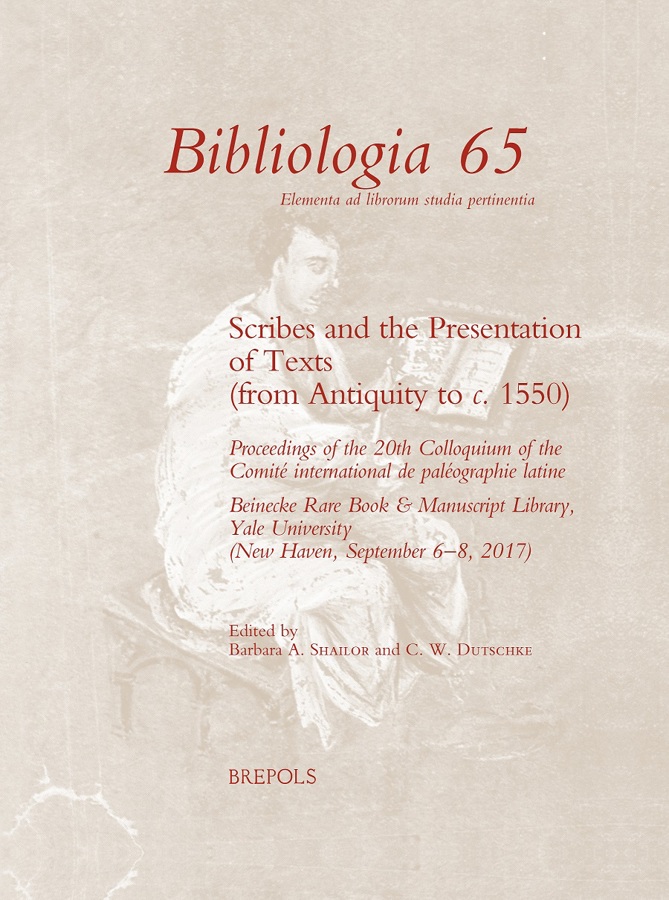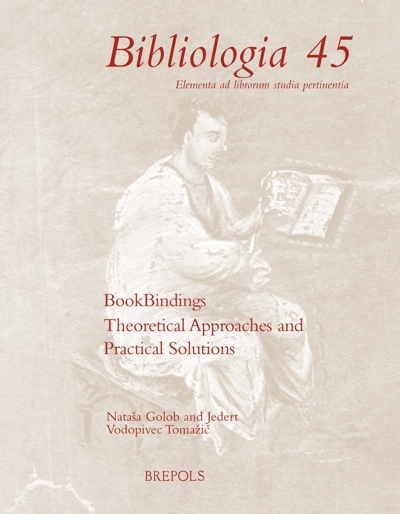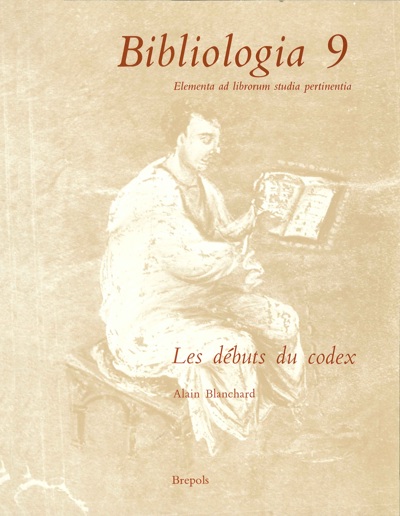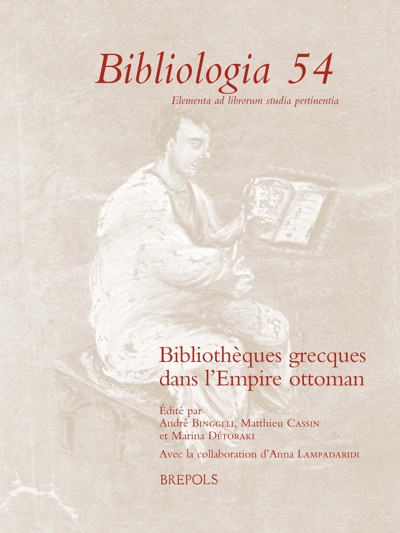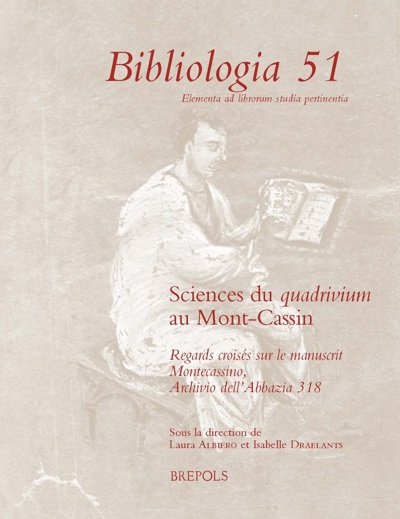
Scribes and the Presentation of Texts (from Antiquity to c. 1550)
Proceedings of the 20th Colloquium of the Comité international de paléographie latine. Beinecke Rare Book & Manuscript Library, Yale University (New Haven, September 6-8, 2017)
Barbara A. Shailor, Consuelo Dutschke (eds)
- Pages: 604 p.
- Size:216 x 280 mm
- Illustrations:193 b/w, 37 col., 27 tables b/w.
- Language(s):English, French, Italian
- Publication Year:2021
- € 90,00 EXCL. VAT RETAIL PRICE
- ISBN: 978-2-503-59516-0
- Hardback
- Available
- € 90,00 EXCL. VAT RETAIL PRICE
- ISBN: 978-2-503-59562-7
- E-book
- Available
What roles did scribes play in Antiquity, the Middle Ages, the Renaissance?
Dr. Barbara A. Shailor became the Director of the Beinecke Rare Book and Manuscript Library at Yale University in 2001; she then assumed the position of Deputy Provost for the Arts. Her award-winning volume “The Medieval Book”, published by the University of Toronto Press, is in its 6th printing; among her other multiple publications is the Catalogue of Medieval and Renaissance Manuscripts in the Beinecke Rare Book and Manuscript Library (3 vols.).
Dr. Consuelo W. Dutschke, recently retired Curator of Medieval and Renaissance Collections at Columbia University, has worked with medieval manuscripts since graduate school days: from checking typed texts against microfilms of manuscripts; from paleography classes; from preparing first-level entries for UCLA’s catalogue of medieval manuscripts, up through writing catalogues of the manuscripts held by the Claremont Colleges and by the Huntington Library; as Curator at Columbia she was responsible for adding to the collection, for teaching paleography from this collection, as well as beginning the online Digital Scriptorium database.
Scribes played complex, often overlooked roles in the production of hand-written texts across Antiquity, the Middle Ages, and the Renaissance. Some scribes simply copied the exemplar; other scribes participated with authors and decorators in establishing the mise-en-page and overall appearance of a text. Many decisions needed to be made regarding the selection of text script; the style of rubrication, display scripts, and initials; the placement and execution of potentially elaborate illuminated images. What was the role of the scribe in contributing to the decision-making process or in determining the final format and material appearance of a document, scroll or codex?
This volume explores many of the choices that a single scribe or groups of scribes would need to make when writing and presenting a text, whether in a monastic, cathedral or lay setting. The articles in the volume range from case studies of a single artifact to the analysis of multiple copies and versions of a particular text.
The authors include eminent specialists in the field of manuscript studies as well as mid- and early career scholars.
Keynote
Stefano ZAMPONI (Università di Firenze Italia), The Papyri of Dura Europos in the History of Latin Script I papiri di Dura Europos nella storia della scrittura latina (In Italian, accompanied by an English translation)
I. Tradition and Innovation: Classical Traditions and Medieval Innovations
Serena AMMIRATI, (Università degli Studi Roma Tre), Il manoscritto latino di contenuto giuridico tra Antichità e Medioevo: strategie distintive e conservatorismo grafico da Oriente a Occidente
Marilena MANIACI & Giulia OROFINO, (Università di Cassino e del Lazio meridionale), Making, Writing and Decorating the Bible: Montecassino, a Case Study
Irene CECCHERINI (University of Oxford), The Shaping of the Latin Classics in 14th-Century Italy
Julia MARVIN ( University of Notre Dame), The Rhetoric of Textual Presentation in Manuscripts of the Anglo-Norman Prose Brut Chronicle: When Foundation Stories Collide
II. Decision Making and Workflow: Patrons, Authors And Scribes
Jesús ALTURO & Tània ALAIX (Universitat Autònoma de Barcelona), Categories of Promoters and Categories of Writings: The Free Will of the Scribes, Cause of Formal Graphic Differences
Francisco ÁLVAREZ LÓPEZ & Julia CRICK (King’s College London), Decision-Making and Workflow in the Making of Exon Domesday
Laura PANI (Università degli Studi di Udine), Lay Scribes before c. 1100: Books, Texts, Scripts
Sébastien BARRET (IRHT-CNRS: Institut de recherche et d'histoire des textes - Centre national de la recherche scientifique, Paris), Présentation des textes, discours diplomatique et ‘responsables de la transcription des actes’ aux Xe et XIe siècles: quelques chartes clunisiennes
Eef OVERGAAUW (Staatsbibliothek zu Berlin), Authors, Scribes and Librarians. Literary Estates in Germany in the Fifteenth and early Sixteenth Century
III. Text and Paratext:
Structuring Texts, Structuring Books
David GANZ (University College London, retired) Half-Uncial Scripts: a Way of Presenting Texts
Andrew J. M. IRVING (Rijksuniversiteit Groningen), Mass by Design: Design Elements in Early Italian Mass Books
Elena RODRÍGUEZ DÍAZ (Universidad de Huelva), Las rúbricas en los códices medievales de los reinos de León y Castilla (siglos XII-XV)
Thomas FALMAGNE (Bibliothèque nationale de Luxembourg), L’ordinatio dans les manuscrits de compilation
Patrizia CARMASSI (Herzog August Bibliothek), Il prologo tra autore, scriba e manoscritto. Indagini su uso e funzione di un particolare paratesto in codici della Herzog August Bibliothek Wolfenbüttel, e della Niedersächsische Staats- und Universitätsbibliothek, Göttingen
Dominique STUTZMANN (IRHT-CNRS: Institut de recherche et d'histoire des textes - Centre national de la recherche scientifique, Paris), Du Roman de la Rose aux livres d’heures : étudier et comprendre les écritures de colophons
Beyond Words: Visual Representations of Meaning
Gabriella POMARO (SISMEL: Società Internaionale per lo Studio del Medioevo Latino, Firenze), Dall’ars scripta all’Ars figurata: Raimondo Lullo (1232-1316) e la tradizione figurata dell’ars combinatoria
Marigold Anne NORBYE (University College London), The manifold manifestations of A tous nobles: decoration and diversity in a French genealogical chronicle
Maria THEISEN (Österreichische Akademie der Wissenschaften, Wien), God Speaks Czech. Some reflection on layout, script and image in Czech Bibles of the 15th Century
IV. APICES Session
Evina STEINOVÁ (Pontifical Institute of Mediaeval Studies, Toronto) Nota and Require: The Oldest Western Annotation Symbols and Their Dissemination in the Early Middle Ages
Anna DOROFEEVA (University of Frankfurt), Reading Early Medieval Miscellanies
Manuel MUÑOZ GARCÍA (King’s College London), The Script of Matthew Paris and His Collaborators (c. 1200-1259): A Multi-Methodological Approach
Adrián ARES LEGASPI (Universidad de Sevilla), La presentación de los textos en las profesiones religiosas del monasterio de San Martín Pinario (Santiago de Compostela), en la primera mitad del siglo XVI
Agnieszka REC (Boston, Massachusetts Historical Society), The Archaeology of the Book and the Alchemy of Cracow
Index of Manuscripts and Documents
Index of Private Collections
Index of Papyri and Tablets
Index of Names
Index of Scribes and Decorators

